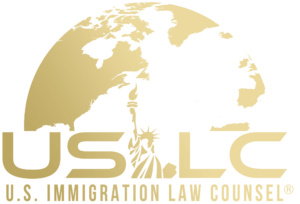If you are a United States citizen or a green card holder, you may have siblings that you want to bring to the U.S. Filing a petition for a sibling is relatively straightforward, but it can become more complicated if you share a father with your sibling but have different mothers. In this case, there are certain types of documentation you have to provide to establish a legitimate relationship. Here is everything you need to know about filing a petition for a sibling with a petition for alien relative.
What is a Petition For Alien Relative?
If you want to file a citizen petition for a sibling, the best way to do this is through a petition for alien relative or more commonly known, form I-130. This is a form provided by the USCIS that a citizen or lawful permanent resident of the United States can file on behalf of a relative.
To be eligible to file form I-130, you need to be at least 21 years old and be a U.S. citizen or lawful permanent resident. When you file for a sibling, you have to have at least one parent that you share so that they are considered to be a blood relative or you need to provide documentation regarding their adoption.
According to the USCIS, a sibling is a legal sibling as long as you are both under the age of 18 and your parents are married or remarried. If born out of wedlock, documentation that proves the legitimacy of the relationship will be required.
Documents Required For I-130 For Siblings
When you file form I-130 for a sibling, you have the option of doing this online or by printing out the form and doing it by hand. It is recommended that you do it on a computer since there is less risk of your answers being illegible.
You will need to provide answers to all of the questions on the form, which are used to establish that you are indeed a U.S. resident or citizen and are eligible to sponsor your sibling. You will also need to provide information regarding your relationship with your sibling to ensure that it is credible and not fraudulent. Here are examples of the types of documentation you need to provide to establish your U.S. citizenship or lawful permanent residency:
- A copy of your certificate of citizenship
- A copy of your naturalization certificate
- A copy of your U.S. birth certificate
- A copy of your U.S. passport
- A copy of your consular report of birth abroad
When you and your siblings share a father but have different mothers, you are considered to be paternal half siblings. The USCIS has specific documentation requirements for paternal half siblings which includes copies of the marriage certificates from the father to each mother. You also need to provide copies of any divorce decrees and you and your siblings birth certificates.
As of right now, the filing fee for form I-130 is $625 to file online and $675 to file by paper. However, keep in mind that the filing fees frequently change, so you need to be prepared to pay more or less depending on when you file. If you file by paper, you will also need to find the correct address to send the form to, and it may take a little longer before you receive approval or denial.
What is the Form I-130 Processing Time For a Sibling?
The sibling petition processing time is something that is not going to be specific since every situation is different. When it comes to siblings who you share a father with but have different mothers, this can also complicate things by making the process longer since your petition may not take priority. The processing time is also dependent on how busy the USCIS is and whether or not a green card is available.
The form I-130 processing time for siblings can take around 11 months or more if you are a U.S. citizen sponsoring your sibling. For sponsors who are a green card holder, the average processing time is around 25 months or longer. Keep in mind that any issues with your petition can result in lengthy delays, especially if further documentation is required for approval.
You should be able to regularly check the status of your petition online, which can also help you to quickly address any issues, such as needing to provide additional information.
Steps to Take Before Filing a USCIS Petition For a Sibling
Even though filing form I-130 is quite straightforward, any immigration petition for a brother or sister can become complicated. This is especially true if you and your sibling only share a father but have different mothers, which can require more extensive documentation. Here are some steps you should take before you begin filing a petition to ensure you don’t run into any issues:
- Hire an attorney: One of the first things you should do before petitioning for your sibling is to hire an immigration attorney. An immigration attorney can help you throughout the entire process, ensuring you fill out the form correctly, send it to the right location, and provide all of the required documentation.
- Find alternative documents: There may be some situations where you do not have all of the documentation that is required to petition for a sibling. If this is the case, you need to look into what alternative documents are acceptable so that you can still provide everything that is necessary for your petition to be approved.
- Double-check information: A very common mistake people make when filing a petition for alien relative is using outdated information. You need to double-check all the information you have, especially any information regarding your sibling, as things like their address may have changed. If certain documents have to be translated into English, you need to go over them to ensure the translation is accurate and free of errors.
Hire an Immigration Attorney Today
Are you ready to start your sibling immigration petition? Contact us today at U.S. Immigration Law Counsel at 800-666-4996 to speak with an immigration attorney about your situation. We will deal with the government, so you don’t have to!




